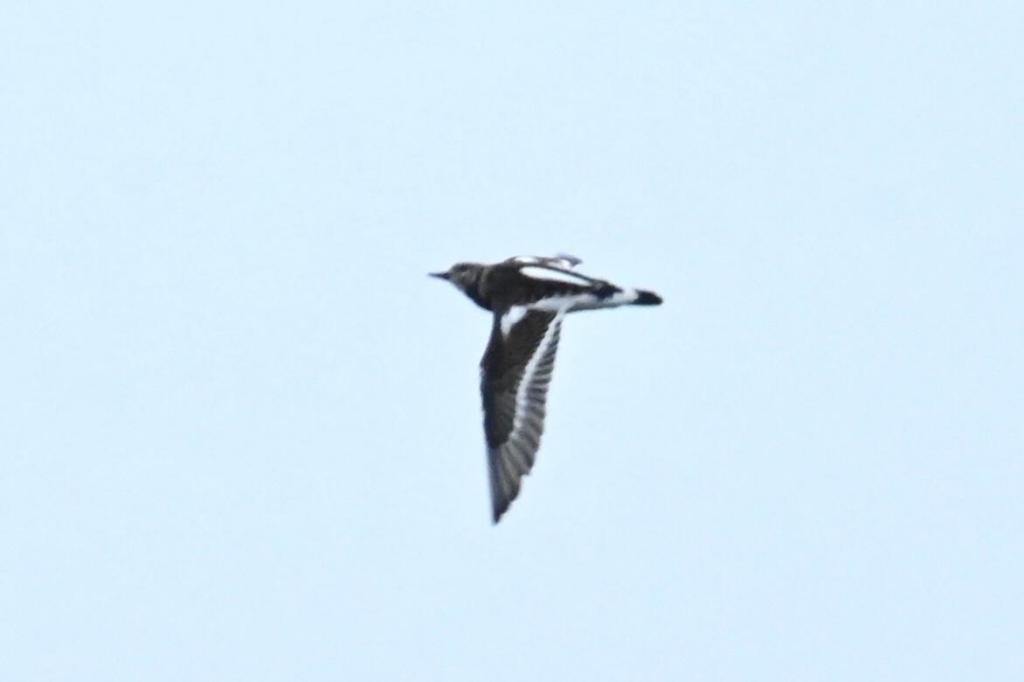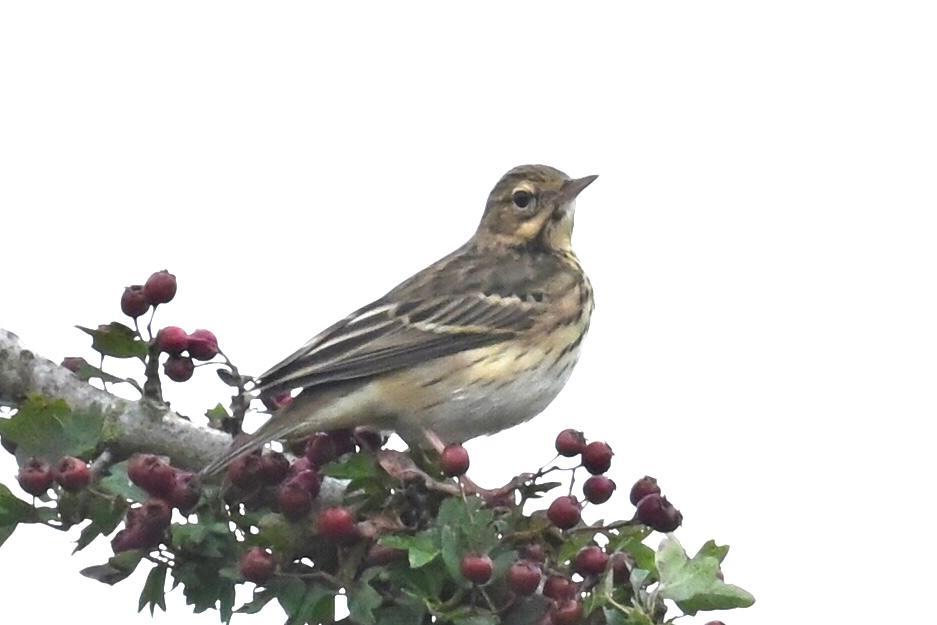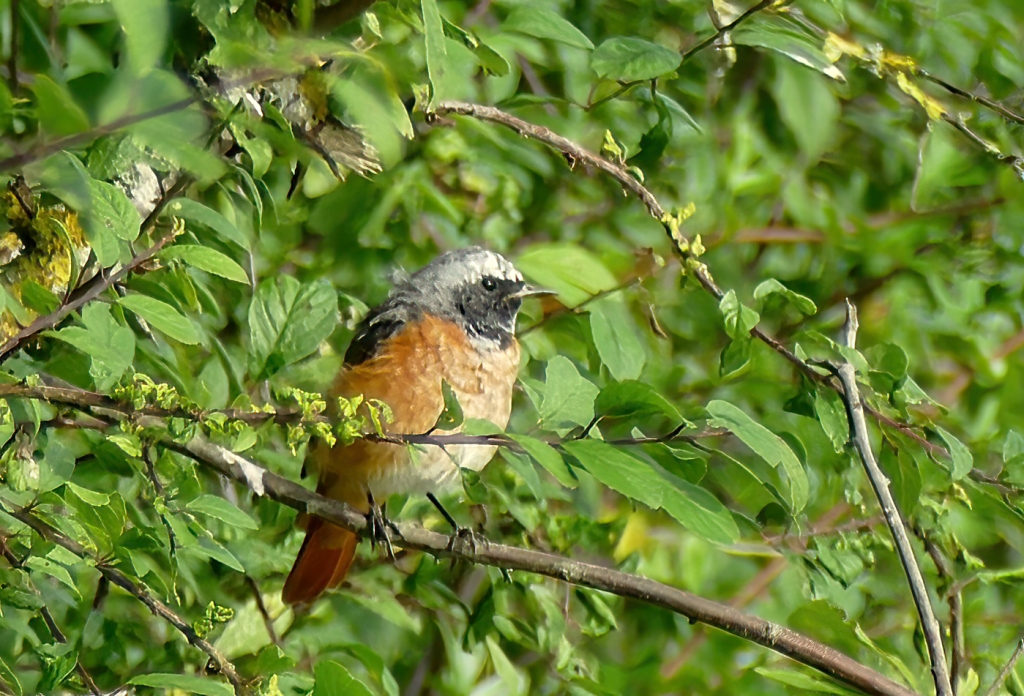Save a short easterly gust, an overall westerly to south-westerly airstream brought predominantly dry weather throughout a week when migrants continued to funnel through the county. Passerines in particular were in abundance, including record numbers of Common Redstarts and a sprinkling of Pied Flycatchers.
Despite building wildfowl numbers, this week’s ducks deluxe remained largely unchanged from the week before, namely the female Ruddy Shelduck, for one day only, at Hollowell Res on 21st and, at Pitsford Res, a Garganey on 24th and a Red-crested Pochard between 20th and 22nd.
Waders continued to bump along the bottom with single Black-tailed Godwits at Ditchford GP’s Irthlingborough Lakes & Meadows LNR on 20th and 21st and at Hollowell Res on the latter date, while four appeared at Stanwick GP on 22nd. The 20th saw four Ruffs at both Ditchford and Pitsford, followed by one at Summer Leys LNR on 24th-25th. Hollowell held a Greenshank from 21st to 25th and two visited Thrapston GP’s Titchmarsh LNR on 22nd.
After single juvenile Mediterranean Gulls at both Stanwick and Wicksteed Park Lake early in the month, two more scaly-backed beasties came our way this week – one at Stanford Res on 21st and the other at Summer Leys on 24th. Otherwise, it was down to Yellow-legged Gulls to keep the scarcity campfire burning. While Stanwick took the lion’s share of eight on 25th, Pitsford held two on 19th and 20th, one on 23rd and three on 24th and, not to be left out, both Summer Leys and Thrapston produced single birds on 24th.
Continuing the autumn run of Black Terns, new birds appeared at Stanford Res on 19th – remaining until 22nd – and at Hollowell on 21st while two, presumably left over from last week’s four, remained at Clifford Hill GP until 22nd, at least one of which stayed on to see the week out.


And it would appear that things are looking up, as far as Cattle Egrets are concerned, with the Summer Leys bird looking settled throughout the period, one putting in a brief appearance at Clifford Hill on 20th and up to three being mobile around Stanwick between 21st and 25th. Good news indeed.


To raptors now and Ospreys kept up their appearances, being seen this week at five different localities. Hollowell produced singles on 19th and 21st, two were mobile around nearby Ravensthorpe Res on the latter date and singles visited Thrapston GP on 22nd-23rd and Pitsford on 24th. One at Summer Leys on 20th and 21st was well-photographed, revealing a blue ring bearing white digits ‘079’, thereby identifying it as a male ringed as a nestling in Northamptonshire on 5th July 2021. Following that, it was seen at Parque Natural Bahia de Cadiz, Spain on 2nd February this year, after which it was seen at Farmoor Reservoir, Oxfordshire on 8th May and then again at Hollowell on 21st June. It has since been seen at various sites in the Nene Valley.

Again making their mark on the week, Marsh Harriers were seen at Hollowell, Lilbourne Meadows NR and Summer Leys – all on 19th, at Harrington AF on 20th and in the Brampton Valley between Cottesbrooke and Hanging Houghton on 20th and 23rd.
And as for the period’s passerines … topping the bill were Pied Flycatchers, all of which were seen on 23rd. First up was one at Stanwick GP late in the afternoon, another was then found at Creaton and another, early evening, at Lamport. None was readily twitchable, it would appear.


Meanwhile, Common Redstarts continued their unabated romp through the county, appearing at seven localities with Stanford, once again, producing the highest site total through ringing. Last week’s day record was equalled on 25th, when twelve were trapped and ringed, bringing the site ringing total to forty-three for the year to date. Lower numbers elsewhere included three at Honey Hill on 25th, two at Blueberry Farm throughout the week, two at Harrington AF and up to two at Lamport, plus singles in the Brampton Valley and at Pitsford.


Whinchats also stood up to be counted, with up to two in the Brampton Valley between 19th and 24th, up to two at Pitsford from 21st to 25th, one remaining at Great Doddington on 22nd and singles at both Stanford and Stanwick on 25th. Still relatively low in numbers, though, were Northern Wheatears, with Pitsford producing two on 24th, while singles were in the Brampton Valley on 19th-20th and 24th and at Earls Barton/Ecton on 20th.

Rounding off the passerines again were Tree Pipits but this week they were the sole preserve of Stanford, where two were trapped and ringed on 20th and two were present on 25th, one of which was trapped and ringed.
































